

~~~~~~~~~~~~~~~~~~~~~~~~~~~~
SCUBA News (ISSN 1476-8011)
Issue 265 - August 2022
https://www.scubatravel.co.uk
~~~~~~~~~~~~~~~~~~~~~~~~~~~~~
Contents:
What's new at SCUBA Travel?
End of the World Resort, Guanaja
Hawksbill Turtle is the Creature of the Month
Diving with Devil Rays in the Azores
Diving news from around the World
 |
Terrific diving in Tanzania's Spice Islands From whale sharks to amazing reefs.
|
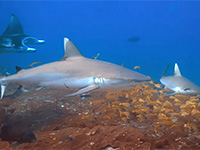 |
The south atolls of the Maldives still have world class diving - see for yourself with our video by Daniel French |
 |
Gateway to Elphinstone and the dugongs of Abu Dabab |
End of the World Resort, Guanaja
No cruise ships, crowded dive boats, overcrowded beaches, wave runners, traffic or other unappealing stresses that are common in more often visited scuba destinations. Find out more...
Critically endangered, the hawksbill turtle lives throughout the world's tropical seas. In the last 100 years their numbers have declined by 80%. However, where countries protect them, and enforce the protection, populations recover.
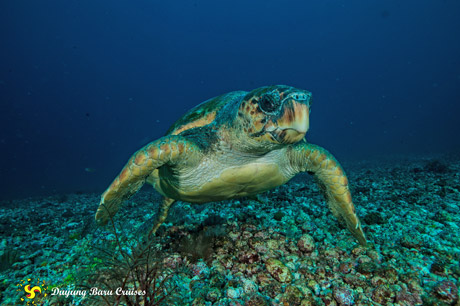
When they leave their beach nest, most hawksbill hatchlings swim to the open sea. They stay here for up to 5 years, after which they migrate to their coral reef homes. Here you see them resting on ledges before swimming to the surface to breath.
Hawksbill turtles don't reach sexual maturity until between 14 and 35 years old. Females then return to the beach where they were born, to lay their eggs.
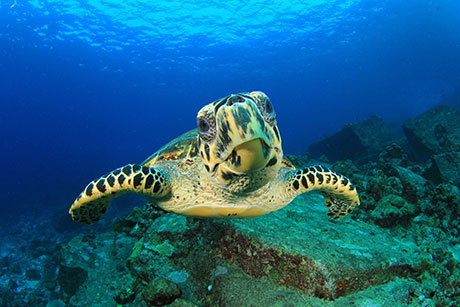
The temperature of the nest determines whether the baby turtles will be male or female. Higher temperatures mean more females. Turtles have evolved to nest when temperatures favour equal numbers of male and female hatchlings, but if this is already the coldest time on their beach, then birth ratios will shift to females if temperatures rise.

A female turtle lays eggs only every 2 to 5 years. In her breeding year though, she lays several clutches. Males may visit several rookeries, so a male-female imbalance might not be critical for the turtles.
Hawksbill turtles are endangered because of our actions like harvesting tortoiseshell, loss of habitat, light pollution and by-catch. As they grow slowly and take years to mature, populations have difficulty recovering.

They are called Hawksbill Turtles because of their pointed beak which they use to scrape the sponges they love to eat from the reef.
Hawksbill turtles are lovely to see underwater and can make a dive.
The largest turtle populations live in northwest Australia, the Solomon Islands and Indonesia. In the Atlantic, Mexico, Cuba and Barbados are Hawksbill turtle hotspots.
Phylum: Chordata > Class: Reptilia > Order: Testudines > Family: Cheloniidae > Genus: Eretmochelys > Species: Eretmochelys imbricata
References
J Gane, CT Downs, I Olivier & M Brown (2020) Nesting ecology and hatching success of the hawksbill turtle (2004-2014) on Cousine Island, Seychelles, African Journal of Marine Science, 42:1, 53-65, DOI: 10.2989/1814232X.2020.1727952
Boletin de Investigaciones Marinas y Costeras - INVEMAR Print version ISSN 0122-9761
Bol. Invest. Mar. Cost. vol.49 supl.1 Santa Marta Dec. 2020 Epub Sep 03, 2021 https://doi.org/10.25268/bimc.invemar.2020.49.suplesp.1061
Conservation of Hawksbill Turtle (Eretmochelys imbricata) in Indonesia, Lessons Learned and Future Challenges. Adela Hemelikova et al. 21 April 2021 https://doi.org/10.2991/absr.k.210420.010
Nakamura, M.F. et al. Lunar phases and hawksbill sea turtle nesting. J Ethol 37, 307-316 (2019). https://doi.org/10.1007/s10164-019-00604-7
Wang et al, Developing ultraviolet illumination of gillnets as a method to reduce sea turtle bycatch. Biol. Lett. 23 October 2013 vol. 9 no. 5 20130383
NOAA https://www.fisheries.noaa.gov/species/hawksbill-turtle
Dive the best of the Azores - see turtles, sharks plus massive congregations of devil rays - in groups of no more than 8.
 |
Can Sculptures Help Coral Reefs Bounce Back?
|
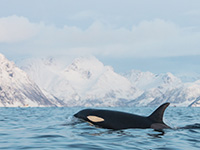 |
Orca surf for survival, as well as for play
|
 |
Scientists take a deep dive into how sharks use the ocean
|
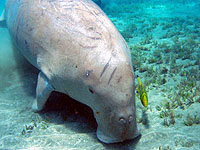 |
Dugongs extinct in China
|
 |
Sea life may downsize with ocean warming
|
 |
Rapid warming in the Gulf of Maine reverses 900 years of cooling
|
SCUBA News is licensed under a Creative Commons Attribution 4.0 Unported License. This means we are happy for you to reuse our material for both commercial and non-commercial use as long as you: credit the name of the author, link back to the SCUBA Travel website and say if you have made any changes. Some of the photos though, might be copyright the photographer. If in doubt please get in touch.
Photo credits: Tim Nicholson, Jill Studholme, Kristin Riser, Jianye Sui
Previous editions of SCUBA News are archived at https://www.scubatravel.co.uk/news.html
SUBSCRIBING AND UNSUBSCRIBING
Visit [UNSUBSCRIBE] and add or remove your e-mail
address. To change whether your receive the newsletter
in text or HTML (with pictures) format visit [PREFERENCES]
ADVERTISING
Should you wish to advertise in SCUBA News, please
see the special offers at
https://www.scubatravel.co.uk/newsad.html
Other advertising opportunities are at
https://www.scubatravel.co.uk/advertising.html
CONTACTING THE EDITOR
Please send your letters or press releases to:
Jill Studholme
SCUBA News
The Cliff
DE6 2HR
UK
news@scubatravel.co.uk
PUBLISHER
SCUBA Travel, 5 Loxford Court, Hulme, Manchester, M15 6AF, UK
Our newsletter, SCUBA News (ISSN 1476-8011), is absolutely free. It is a monthly publication, delivered by e-mail. To receive your copy fill in your details below. We will never pass your e-mail address to any third parties, or send you unsolicited e-mail.
To receive your copy fill in your details below. We will never pass your e-mail address to any third parties, or send you unsolicited e-mail.
You will receive an e-mail confirming your subscription. If you don't receive this you may have entered your e-mail address incorrectly - revisit this page and re-subscribe.
We love hearing from you: send us any news, dive write ups, reviews or comments